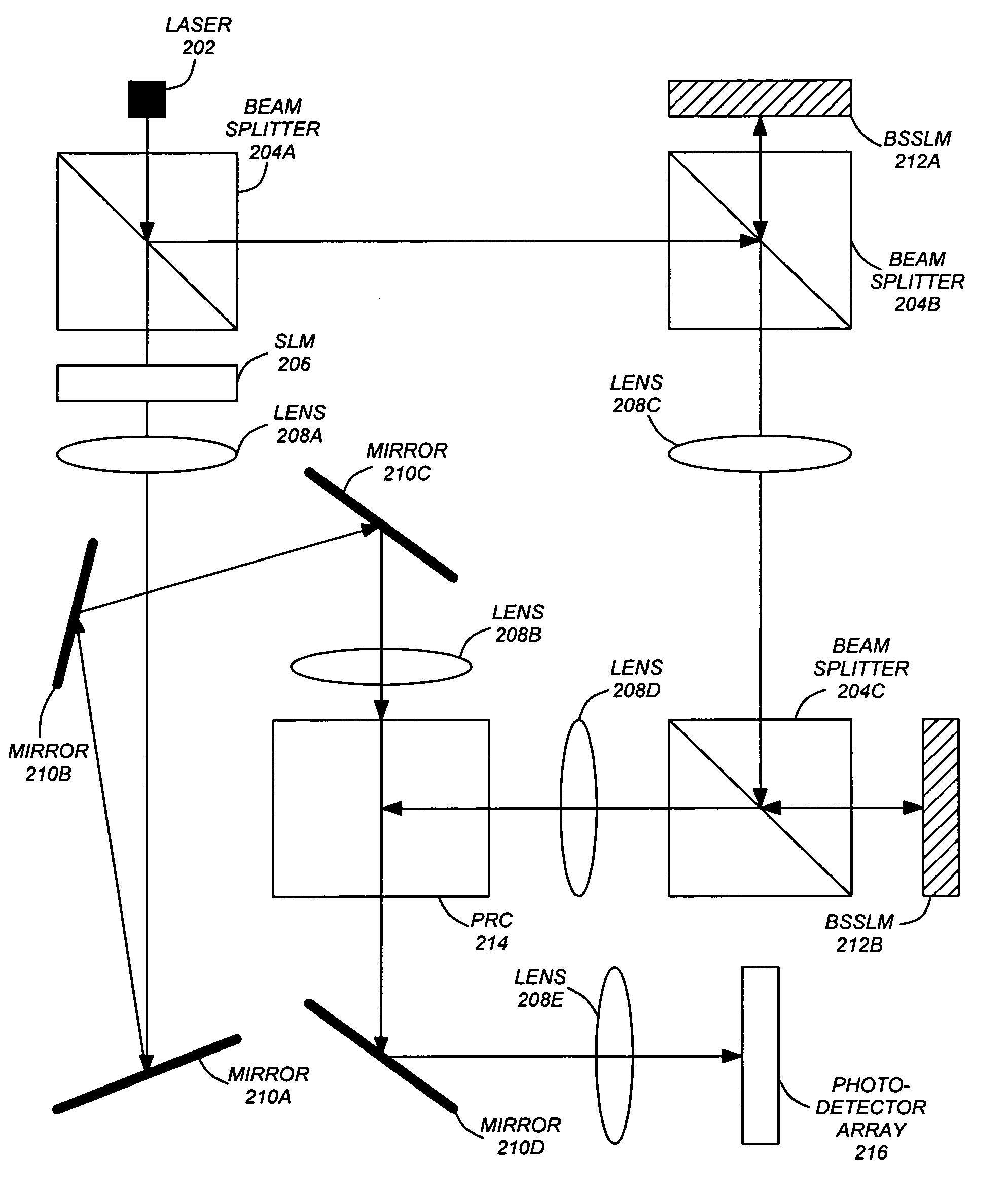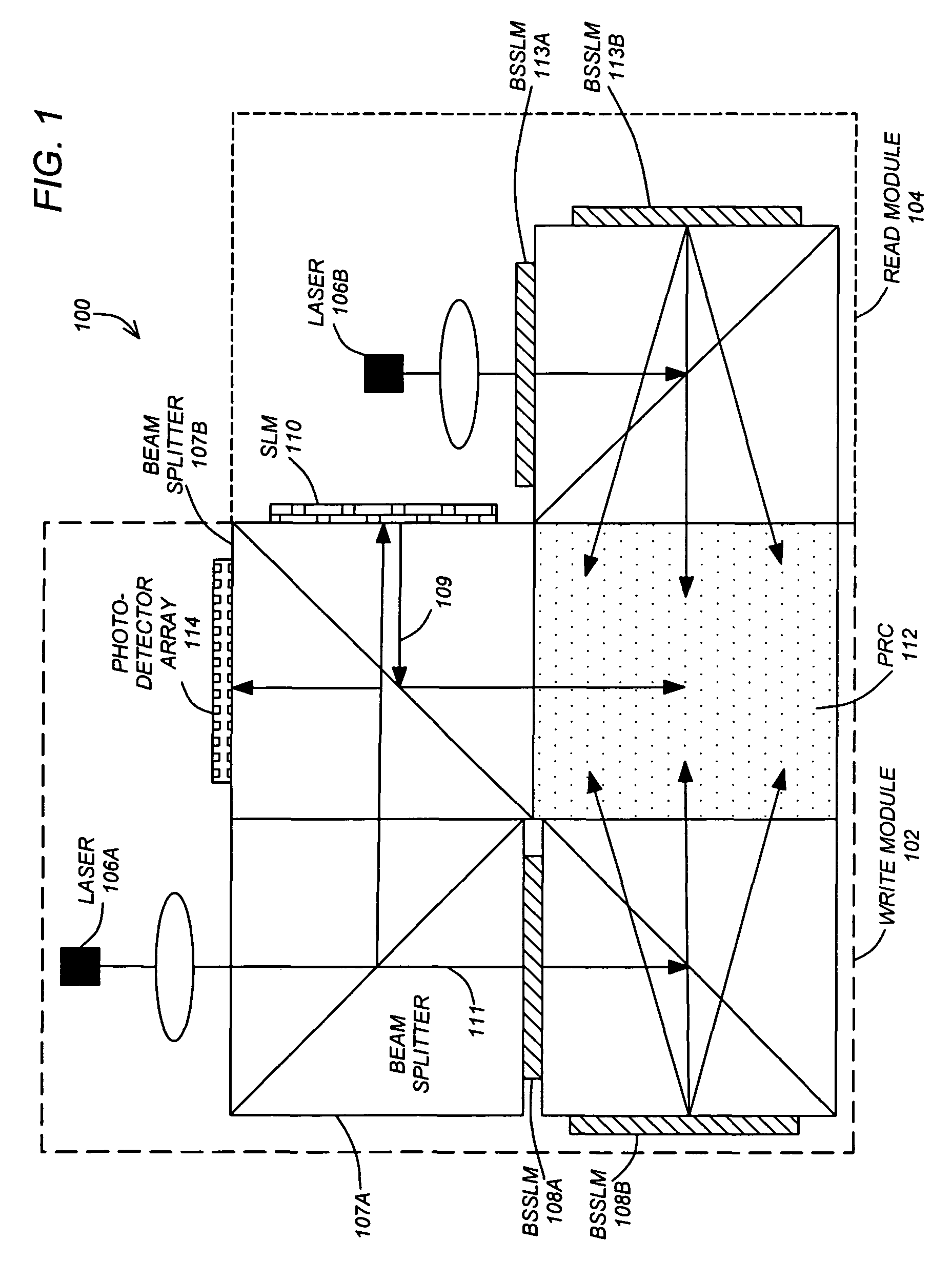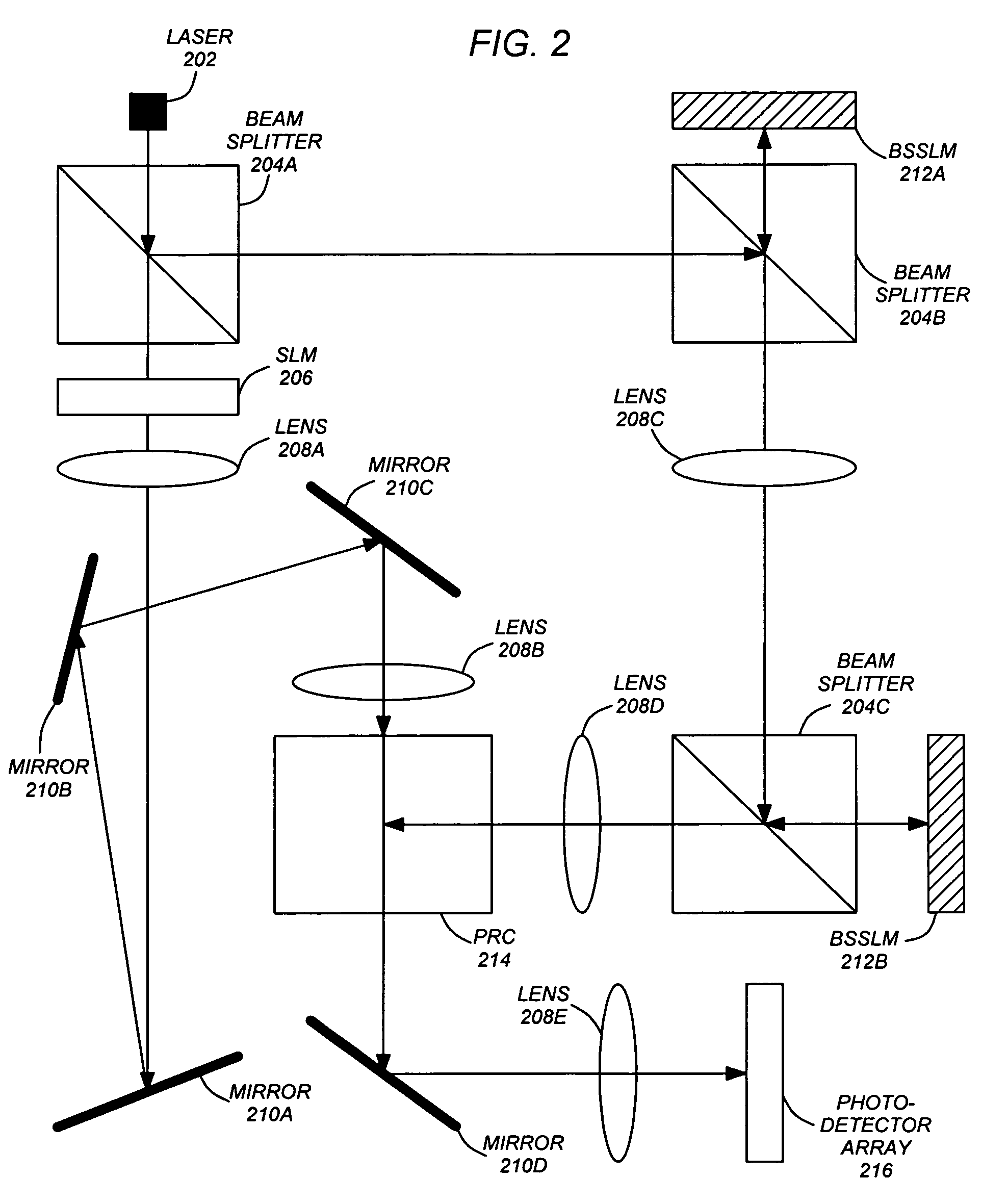High density, high bandwidth multilevel holographic memory
a multi-level, high-density technology, applied in the field of holography, can solve the problems of limited holographic memory density, limited transfer and capacity capabilities of prior art optical storage methods, and limited holographic memory speed with respect to recording data and/or reading data from storage media, etc., to achieve superior light throughput, contrast, grayscale range, and high density of holographic media
- Summary
- Abstract
- Description
- Claims
- Application Information
AI Technical Summary
Benefits of technology
Problems solved by technology
Method used
Image
Examples
Embodiment Construction
[0038]In the following description, reference is made to the accompanying drawings which form a part hereof, and which is shown, by way of illustration, several embodiments of the present invention. It is understood that other embodiments may be utilized and structural changes may be made without departing from the scope of the present invention.
Overview
[0039]One or more embodiments of the invention provide a new concept and system architecture for an ultrahigh density (terabytes) and ultrahigh bandwidth (Gigabits / sec) holographic memory. A multilevel hologram recording and readout system is used to replace the prior art binary holograms. For example, prior art holographic memory density can reach 1 terabyte by using binary holograms (e.g., 1 pixel value is either 0 or 1). By using a multilevel hologram, a 3-bit (8 digits) hologram can be used to increase the storage density up to eight (8) terabytes. An 8-bit hologram can increase the storage density to 256 terabytes without signif...
PUM
 Login to View More
Login to View More Abstract
Description
Claims
Application Information
 Login to View More
Login to View More - R&D
- Intellectual Property
- Life Sciences
- Materials
- Tech Scout
- Unparalleled Data Quality
- Higher Quality Content
- 60% Fewer Hallucinations
Browse by: Latest US Patents, China's latest patents, Technical Efficacy Thesaurus, Application Domain, Technology Topic, Popular Technical Reports.
© 2025 PatSnap. All rights reserved.Legal|Privacy policy|Modern Slavery Act Transparency Statement|Sitemap|About US| Contact US: help@patsnap.com



